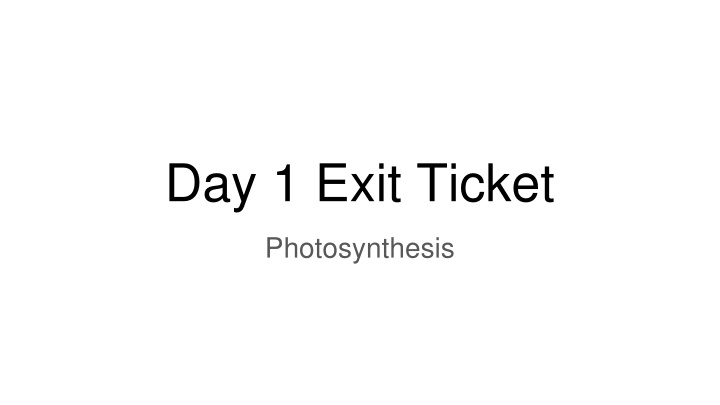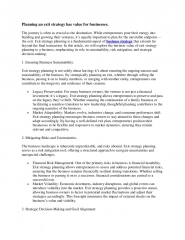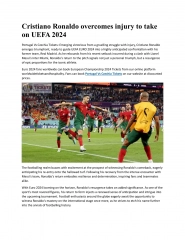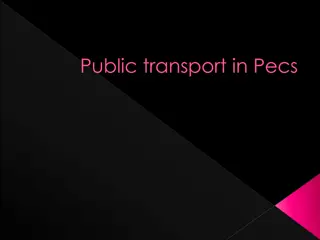
Science Exit Ticket Questions on Photosynthesis and Cellular Respiration
Test your knowledge with these exit ticket questions on photosynthesis and cellular respiration. Learn about the organelles involved, raw materials needed, products produced, and which organisms carry out these vital processes. See if you can answer all the questions correctly to reinforce your understanding of these biological mechanisms.
Download Presentation

Please find below an Image/Link to download the presentation.
The content on the website is provided AS IS for your information and personal use only. It may not be sold, licensed, or shared on other websites without obtaining consent from the author. If you encounter any issues during the download, it is possible that the publisher has removed the file from their server.
You are allowed to download the files provided on this website for personal or commercial use, subject to the condition that they are used lawfully. All files are the property of their respective owners.
The content on the website is provided AS IS for your information and personal use only. It may not be sold, licensed, or shared on other websites without obtaining consent from the author.
E N D
Presentation Transcript
Day 1 Exit Ticket Photosynthesis
1. Which organelle does photosynthesis take place? a. mitochondria b. chloroplast c. nucleus d. vacuole
2. Photosynthesis takes place in: a. Cells that contain chloroplasts c. Single cells only b. Cells that contain glucose d. All cells
3.Which of the following are the essential raw materials (reactants) for photosynthesis? a. water and oxygen b. glucose, oxygen, and water c. glucose, water and carbon dioxide d. carbon dioxide and water
4. What are the products in the reaction? a. carbon dioxide and water b. glucose and oxygen c. chlorophyll and sunlight d. there are no products
5. Photosynthesis is carried out by a. animal cells c. plant cells b. all living things d. viruses
Day 2 Exit Ticket Cellular Respiration
1. The cell organelle responsible for producing energy is: a. nucleus b. mitochondria c. chloroplast d. lysosome
2.The process of producing energy at the cellular level is called: a. Artificial Respiration b. Photosynthesis c. Cellular Metabolism d. Cellular Respiration
3. Cellular respiration is carried out by which of the following? a. Animals, but not plants b. Heterotrophs, but not autotrophs c. All living organisms, all the time d. Plants, but not animals
cellular respiration? a. 6CO2+ 6O2--> C6H12O6+ 6H2O + ATP b. C6H12O6+ 6O2---> 6CO2+ 6H2O + ATP c. 6CO2+ 6H2O ---> C6H12O6+ 6O2+ ATP d. C6H12O6+ 6H2O ---> 6CO2+ 6O2+ ATP
Day 3 Exit Ticket Aerobic/Anaerobic Respiration
1. The cell s main source of energy is: a. glucose c. water b. oxygen d. protein
2. The main energy carrying molecule of the cell is: a. DNA c. AMP b. ATP d. ADP
3. When a phosphate is removed from an ATP molecule, the resulting molecule is: a. ADP c. NAD b. DNA d. AMP
4. Organisms need to store energy because: a. a cell can release only stored energy b. a cell can t always immediately use all the energy it makes c. an organism often has times when no energy is used d. a cell cannot make energy and must get it from elsewhere in the organism
5. The anaerobic side of cellular respiration is also known as: a. sublimation b. hydration c. conjugation d. fermentation
Day 4 Exit Ticket Various Topics
1. How many ATP are produced in aerobic cellular respiration? a. 36 ATP c. 4 ATP b. 18 ATP d. 2 ATP
2. Lactic acid can build up in human muscle cells: a. When there is a lack of oxygen c. During aerobic respiration b. During strenuous exercise d. Both A & B
3. A dog running in the park would expect to have a lot of this produced in its cells. a. glucose c. CO2 b. chlorophyll d. O2






















